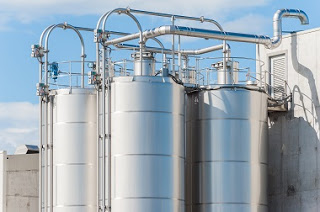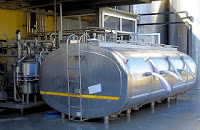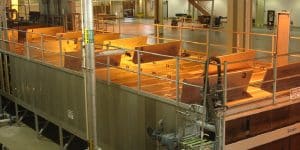
Stainless Steel Is Safe for Most Foods
Added nickel helps improve corrosion resistance in many of the stainless steel products designed for the food and beverage industry. Scientific research has proven that stainless steel is an ideal surface for storing and transporting milk, dairy products, beer, wine, fruit juices, soft drinks, vegetables, fish, meat, baked goods, and a variety of other food related items. Stainless steel is used in various forms and applications from the agriculture and food harvesting process, to the food production process, and on to the food packaging process.
Can Stainless Steel Prevent Food Contamination?
Contamination is a huge problem in the food, agricultural, and packaging industries. While the metal itself can’t directly do anything to prevent food from becoming contaminated, the qualities of this steel help ensure the containers themselves don’t contaminate the food. Secondly, stainless has a slick surface and is easy to clean. The ability to provide clean surfaces in turn helps keep food safer from one batch to the next.
Does Stainless Steel Corrode?

How Widespread Is Food Contamination?
Every single year, 48 million Americans get sick from food-borne pathogens, nearly 200,000 are hospitalized, and about 3,000 die. Between coordinating the removal of food from shelves, updating plants to fix problems, PR and resulting lawsuits, the economy loses about 7 billion dollars as a result of contaminated food each year. While the monetary cost is significant, our heart goes out to the families that have to deal with the loss of a loved due to this problem.
Preventing Food Contamination at the Commercial Level
The old “accidents happen” saying doesn’t really apply when people’s lives are on the line. That’s why having the right equipment and maintaining that equipment is so important. Every company in the food industry or involved in the process should be thinking about these statistics and finding ways to help mitigate these risks. Well trained employees, high-quality, stainless steel containers, automatic control panels on tanks and conveyor belts, and proper maintenance of equipment can all work together to help minimize opportunities for contamination.
Cleaning And Maintaining Stainless Steel
For more information about cleaning, disinfecting, and maintaining stainless steel, check out this informative video from the International Chromium Development Association (ICDA):
The food and beverage industry is faced with a myriad of challenges as it is, equipment quality shouldn’t be one of them. Our advice is to start with very high quality, stainless steel containers, like the ones we fabricate right here in the U.S.A. Contact us for more information about large commercial food and beverage containers or to get quote for custom metal fabrication.





 Contract
Contract Food & Bev
Food & Bev